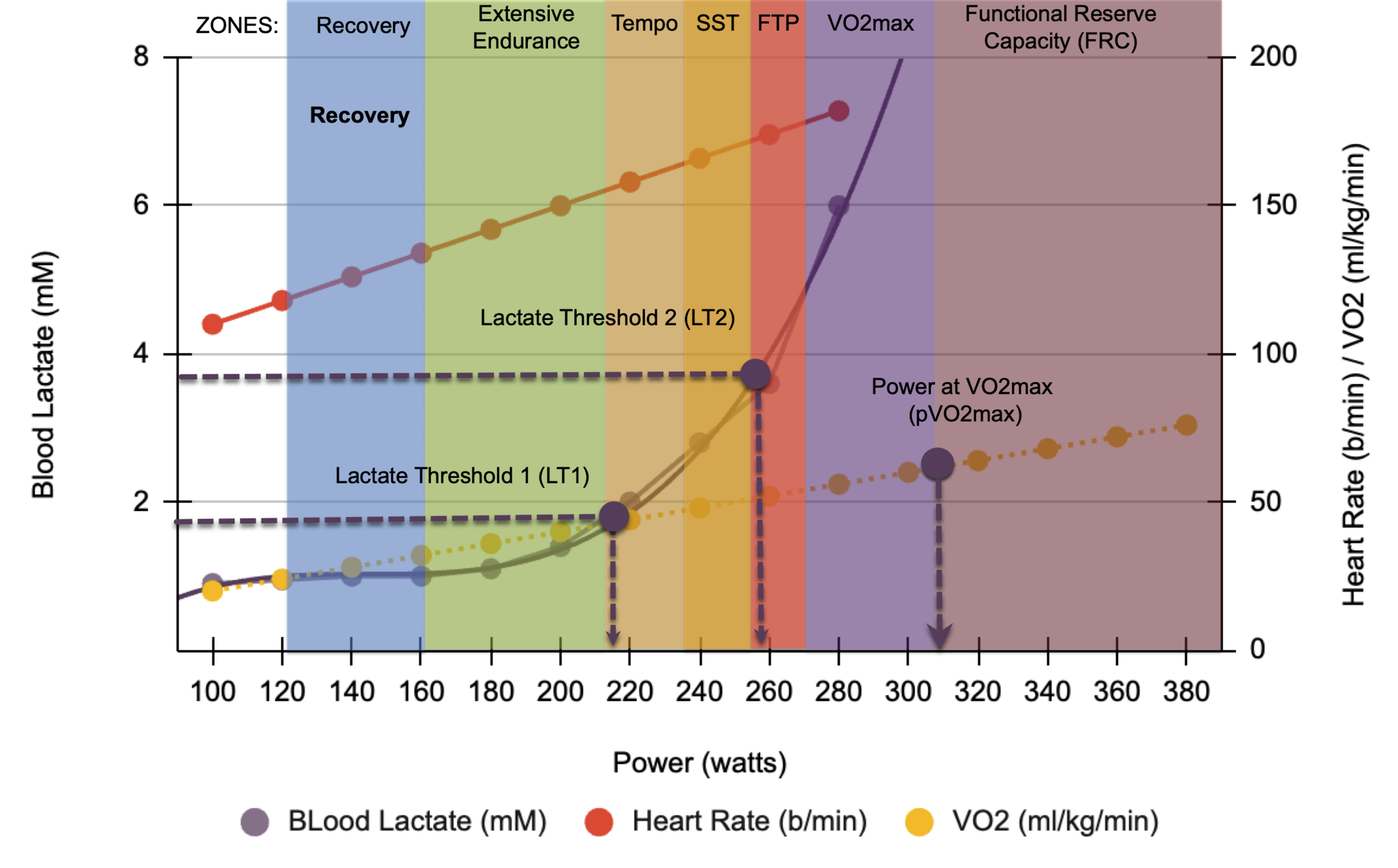
Bike Sessions
Durability
Session Outline
Durability sessions are all significant sessions; they are high-load and can include anything from Tempo to VO2max efforts.
These sessions aim to develop robustness or fatigue resistance. Most are designed to push the limits of what you can do, so it is not uncommon for athletes to fail at some point in the later stages of the session. They are intended to be challenging and should be approached like a race.
Your aim in any of these sessions should be to follow the plan as long as possible, even if you look at the session and think you cannot do it. We want to see how you will you can do this session.
Representation of Lactate Thresholds 1 and 2, with Tempo and SST highlighted
Read the session before you start.
Many of these sessions are long and have a lot of steps, if you are performing them outside it is very useful to know what is coming up and if there are any specific instructions.
How to perform
These sessions begin in the days before the actual session. You need to be well-fuelled, recover as much as possible, and plan the logistics of the sessions.
Before the session, ensure you are fully prepared and have your nutrition ready and available. These sessions do not work if you spend half an hour in the shop or cafe stocking up.
The sessions can be performed on the road or on the trainer. In the real world you will need to be more flexible with the execution and ride the terrain and roads as you see them, to the best of your ability following the plan of the session.
On the trainer you can perform them in free mode, where you feel all the elevation changes, potentially trying to match the terrain to any up coming races. You will need to see the session and probably use a Garmin/Wahoo to lap each split so you know you are on track.
You can do them in erg or session mode as well, which is the simplest to follow but some of the long sessions can be mentally demanding.
Fuelling
The bare minimum on these sessions is your race fuelling level, which for most people is now at least 80g of carbs every hour right from the start, rising to >150g for a few people.
Hydration may be significant depending upon location, and this should be factored in.
A little dehydration is acceptable but more than 3 - 4% loss in weight will begin to have a significant performance impact.
In some sessions, we will require you to over-fuel so that you can train your gut to manage the high level of carbs. There is also a psychological impact with this too.
These are the sessions to test the system, so on race day, you know you can tolerate the plan.
Other strategies may also be employed, such as the use of caffeine.

